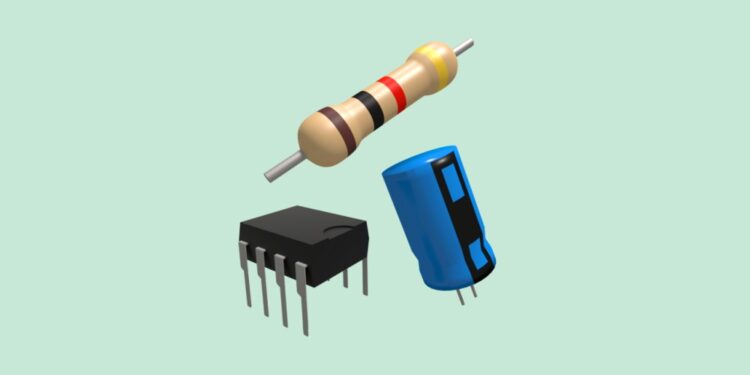As the name suggests, DIY (Do It Yourself) implies working on projects or tasks rather than relying on experts and professional help. Whether setting up a household appliance or fixing the electrical wiring at home, the sense of accomplishment at the end is unmatched. This can be a pastime, a way to blow off some steam or enhance your technical innovation skills.
Fundamentals to know before starting your DIY electronics project
The thrill comes with its dangers, and so does the excitement of working on your electronic piece of art. So, it is essential to familiarize yourself with the basics before you kickstart your DIY project.
1. Get your fundamentals in order
Getting your basics correct is universal advice that applies here too. After that, it’s all fun and games until things go south. So, to avoid this, lay a strong foundation of the preliminary knowledge required to handle and work with electronic devices. Go through safety guides and introductory articles, and watch a few tutorials guiding you through the elementary concepts. Some basic tools needed for your DIY electronics model are as follows:
- Soldering iron
- Precision screwdriver set
- Wire cutter
- Glue guns
- Drill and drill bits
2. Research and gift yourself an all-in-one electronics kit
Get yourself an all-in-one kit based on the type of model you want to develop. Most DIY Kits are battery-powered. Look for suitable kits depending on the resources required, budget, and purpose. Sift through vendor websites and e-commerce platforms beforehand to get a fair idea of commonly used kits. Then, ensure to choose the apt electrical DIY project kit.
3. Take the help of tutorials
The true challenge of a DIY project lies here. For smooth sailing, watch and learn from tutorials. The world is online, and so is everything you need. With myriad video tutorials and articles available on the internet, prior experience is no longer a precondition to dealing with advanced electrical appliances and tools. So, browse through and get started. Now that the groundwork is ready, time to buckle up and get cracking on your next project.
Top 10 DIY electronics projects
If you are a rookie looking for your first project, or just someone looking for your next DIY model, make it a unique and useful one. Choose from these top 10 intriguing DIY electronic projects.
1. Walkie talkie
Radios are outdated and almost considered antiques now. But then, why not gather those old radios lying around and put them to work? You will need only an FM transmitter, a receiver, a microphone, and a speaker to create your DIY walkie-talkie.
2. Chapstick searchlight
Grab those used-up chap sticks or glue sticks instead of tossing them into the trash and develop your searchlight. Also, put your soldering skills to the test in this project. Handy and portable, these flashlights can also be used while working on other projects. Wealth from waste indeed.
3. Fire alarm
Safety first always, and here’s how you can take it into your own hands. An LDR circuit, which has the ability to detect smoke, can be used to create an effective fire alarm. It will automatically be triggered in a house fire, saving many lives. A few other components you will require are a thermistor, a resistor, an amplifier, and a power supply source.
4. Wireless charging circuit
Running out of battery is one of our biggest nightmares nowadays. But worry no more. Using a coil, rechargeable battery, LED, and a capacitor, you can build your charging board, which can be used for small portable devices like smartwatches, earphones, and air pods. So now, impress those around with this handmade power bank.
5. Audio amplifier
Listening to music is therapeutic for many of us. So, make this better with a simple audio amplifier using a few capacitors and batteries. Connect it to the music source, like your laptop, mobile phone, or any other device. And it’s time to make some noise! This model can also be used in small house parties and social gatherings, where you can flaunt your DIY skills.
6. Inverter
Power outages can be frustrating and may even lead to losing your precious time and work. So, cope with the issue with a DIY inverter. It can be easily made with the help of a few power transistors. In addition to the usual materials, a transformer and an automobile battery will suffice. However, a ventilated metal cabinet must be used to ensure proper storage.
7. Handmade motor
Have fun with magnets while doing this project! Get a magnet, preferably a neodymium magnet, and a few other household things like an AA or AAA battery, wire, cotton balls, rubber bands, and safety pins. Gather all the items from around your house and make this a fun science experiment, which can also be used to work with small-scale machines and tools.
8. Motion detector
Detection of infrared rays is the crux of this device. It can be a basic motion detector or tweaked using various components to act as an anti-theft or intrusion detector device. You will need an IR diode, 2 comparator ICs (an electronic circuit), and a 555 Timer IC to identify and end break-ins or trespassing.
9. Biometric attendance system
Discard the boring attendance registers and guest lists on paper. Instead, adopt the innovative way of keeping track of your students, target audience, or guests and impress them with your DIY ingenuity. All you need is a microcontroller and the code. Then, you can easily get the code online on platforms like GitHub and use it to run the system effectively.
10. Automobile collision protection
Make navigation and parking easy by setting up an intelligent back camera for your cars and trucks. Using an ultrasonic sensor, raspberry pi, breadboard, battery, and jumper wires, turn things up a notch with this DIY project and make driving safer.
Final words
Electronic DIY projects are works of art with easy access to different components and exciting arenas. Whether a course-mandated project, an adult rekindling hobby, or a beginner model, the exhilaration is unparalleled.




































































































































































































